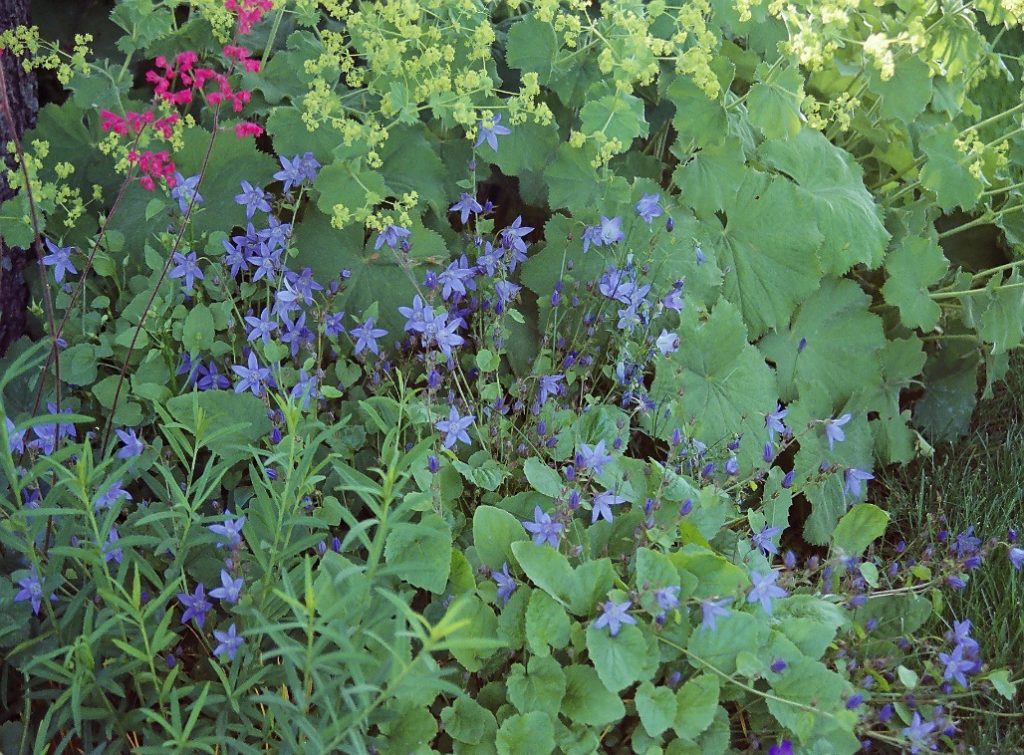Growing Vegetables in Containers is suited when space is not available for a typical vegetable garden or mobility makes bending difficult or wanting to increase your growing area. All are solid reasons for gardening in pots.
Large containers are the best as they hold more soil, which dries out slower and provides more growing choices. Use only soil sold for containers as it’s lighter and has good drainage. Containers can be anything you can drill drainage holes in.
Soil Depths for vegetables in Containers
6’’ – green onions, radish, spinach, Swiss chard
8’’- beans, beets, broccoli, cucumber, kale, leeks, lettuce, peas, most herbs
10’’- cabbage, carrots, cherry tomato
2 to 4 gallon – one plant per pot- cherry tomato, pepper
5 gallon – one plant- eggplant, potato, large fruit tomato, zucchini
Techniques for optimum growing
Pick the sunniest locations for growing.
Cultural practices – sanitation, pruning, weeding, regular inspection for disease and pests, consistent and proper watering – all contribute to growing healthy plants and will reduce the amount of chemicals necessary to treat problems.
When seeding your own plants – start them in peat or coconut fiber (coir) pots; at planting time the whole thing can be planted.
Chose cultivars suited for a short growing season and good disease resistance.
Tips
Crop rotation – essential for soil to replenish itself, reduces soil borne pests and diseases and confuses flying pests.
Perennial plants can be grown in containers – to survive winter the pots will need to be sunk into the ground. This will insulate roots from temperature fluctuations.
Space saving – alternate a root vegetable with an above soil vegetable.
Catch rain water – plants prefer untreated and air temperature water.
Fertilize as per manufactures directions and Never on dry soil.
Crops
Cool weather vegetables that prefer spring and late summer temperatures/can be seeded in both seasons: spinach, lettuce, peas, kale, Swiss Chard and radish.
Warm weather vegetables will not tolerate frost; require the heat of summer to mature – cucumber, eggplant, peppers, pumpkin, tomato, and melons.
Herbs for partial shade – basil, burnet, borage, chamomile, catnip, chives, coriander, dill, the mints and parsley, keep evenly moist.
Herbs for full sun and drier conditions – anise, lavender, marjoram, oregano, winter savory, upright rosemary, sage, tarragon and thyme.
“To dig & delve in nice clean dirt can do a mortal little hurt.” John Kendrick B
Fact or Folklore

Alchemilla mollis, given this name by the Alchemists who for their mysterious practices collected the dew gathered during the night on its leaves. Alchemists believed that the dewdrops had magical powers and would help them in their quest for the philosopher’s stone.
Know commonly as Lady’s Mantle, the plant’s pleated leaves resemble a medieval woman’s cloak. It was a sacred plant among the Ancients because of its therapeutic qualities. It has been used to treat wounds and stop bleeding, Lady’s Mantle contains tannin, making it astringent.
In The Garden
Prefers moist and part shade. Adaptable to most soils and locations though. Attractive and hardy to zone 2. Cut back after flowering to tidy plant.
For the Love of Latin
The Genus is the first part of a plant botanical name. Genus is the name given to a group of organisms that’s physical characteristics are permanent and similar and largely confined to that group. Its first letter is always in upper case.
The second name is the species name and refers to a feature of the plant. It is always in lower case.
Alchemilla – a plant valued for its use in alchemy
mollis – soft, flexible or mild